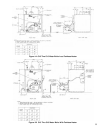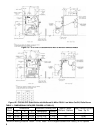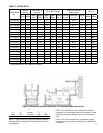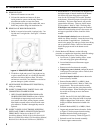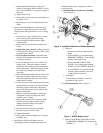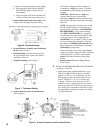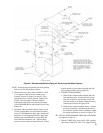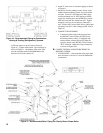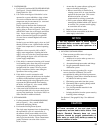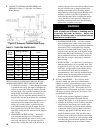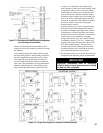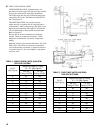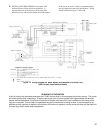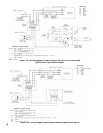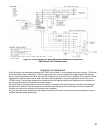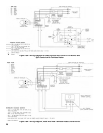
13
i. Assure that all system radiators, piping and
vents are absolutely leak tight.
• When a steam boiler is installed in an
existing system, ALL air vents should be
replaced at the same time. This assures
that the new boiler will not be
compromised by existing system leaks.
• If the system contains hidden supply or
return piping (hidden behind walls, buried
in concrete, etc.) pressure test this piping
to assure there are no leaks.
ii. Repair any leaks in the system.
iii. Install accurate water meter on the fresh
water supply to the boiler.
NOTICE
Do not use softened water in steam boilers.
Accelerated boiler corrosion will result. Tie in
fresh water supply to the boiler upstream of a
water softener.
4. OXYGEN CONTAMINATION:
a. There are many possible causes of oxygen
contamination such as:
i. Addition of excessive make-up water as a
result of system leaks.
ii. Absorption through open tanks and ttings.
iii. Oxygen permeable materials in the
distribution system.
b.
In order to insure long product life, oxygen
sources should be eliminated. This can be
accomplished by taking the following measures:
i. Repairing system leaks to eliminate the need
for addition of make-up water.
ii. Eliminating open tanks from the system.
iii. Eliminating and/or repairing ttings which
allow oxygen absorption.
iv. Use of non-permeable materials in the
distribution system.
v. Isolating the boiler from the system water by
installing a heat exchanger.
See Section V, Paragraph B, Step 3 for additional
details.
CAUTION
Oxygen contamination of the boiler water
will cause corrosion of iron and steel boiler
components, and can lead to boiler failure. New
Yorker's Standard Warranty does not cover
problems caused by oxygen contamination of
boiler water or scale (lime) build-up caused by
frequent addition of water.
2. WATER BOILER
a. For Forced Circulation HOT WATER HEATING.
See Figure 9. Consult I=B=R Installation and
Piping Guide No. 200.
b.
Use a boiler water bypass if the boiler is to be
operated in a system which has a large volume
or excessive radiation where low boiler water
temperature may be encountered (i.e. converted
gravity circulation system, etc.).
Install a pipe tee between the circulator and
boiler return along with a second tee in the
supply piping as shown in Figure 9. The bypass
should be the same size as the supply and return
lines. Locate valves in the bypass and supply
outlet as illustrated in Figure 9 for regulation
of water ow to maintain higher boiler water
temperature.
Set the by-pass and boiler supply valves to a half
throttle position to start. Operate boiler until the
system water temperature is a normal operating
range.
Adjust the valves to provide 180° to 200°F
supply water temperature. Opening the boiler
supply valves will raise the system temperature,
while opening the bypass valve will lower the
system supply temperature.
c. If this boiler is connected to heating coils located
in air handling units where they may be exposed
to refrigerated air the boiler piping must be
equipped with ow control valves to prevent
gravity circulation of boiler water during the
operation of the cooling system.
d. If this boiler is used in connection with
refrigeration systems, the boiler must be installed
so that the chilled medium is piped in parallel
with the heating boiler using appropriate valves
to prevent the chilled medium from entering
the boiler, see Figure 10. Also consult I=B=R
Installation and Piping Guides.
e. A hot water boiler installed above radiation level
must be provided with a low water cutoff device
as part of the installation. See Section VIII, Low
Water Cut-Off for additional details.
3. STEAM BOILER
a. For Recommended STEAM BOILER PIPING
refer to Figure 11. Also, consult I=B=R
Installation and Piping Guides.
b. Evaluate the Existing Steam System.
The single most important factor in determining
the expected life cycle of a steam boiler, is
the amount of fresh water added to the boiler
during operation. Fresh water brings minerals
and oxygen into the boiler. These contaminants
greatly accelerate corrosion of the cast iron
boiler sections.



